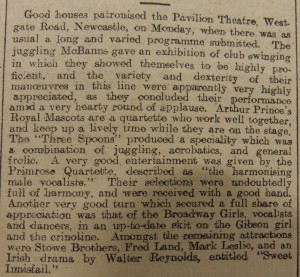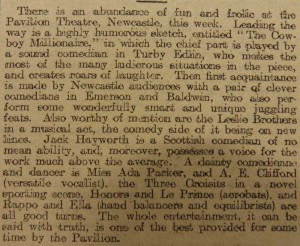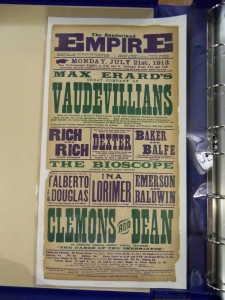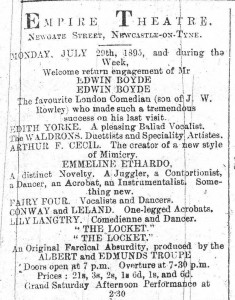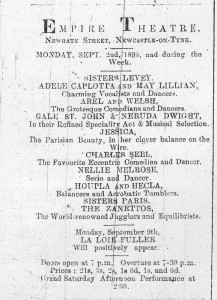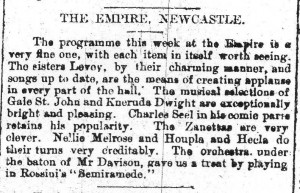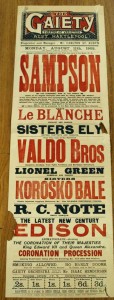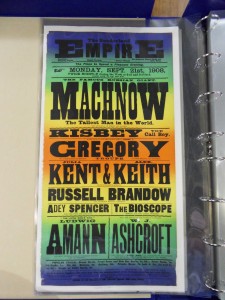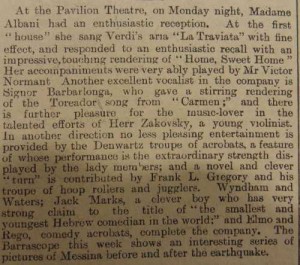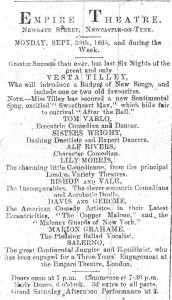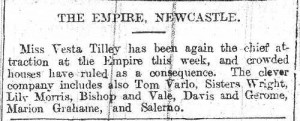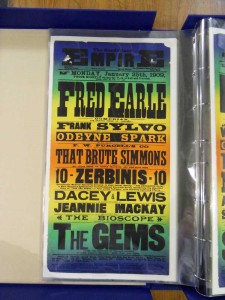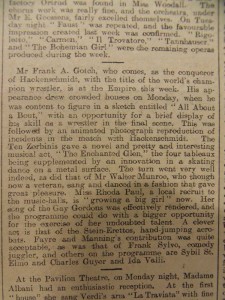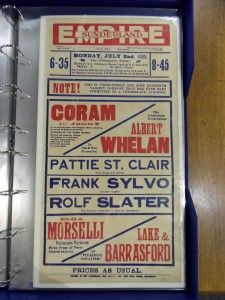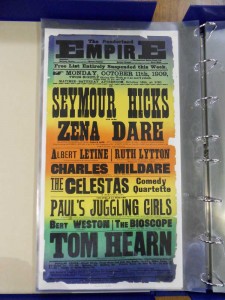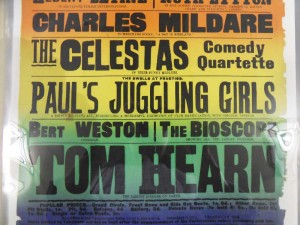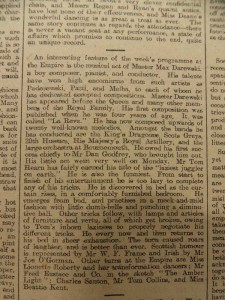Newcastle Weekly Journal and Courant of 27 February 1909 describes a performance by the Howard Brothers at Newcastle Empire:
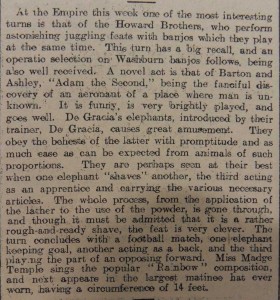
In the 1996 Andrew Conway posted an extract from Variety Magazine of 23 December 1911 in this rec.juggling post. It describes the routine beautifully:
HOWARD BROTHERS
There are many players of banjo touring the vaudeville circuits, and banjo playing acts must posess exceptional features in order to be classed among the Novelties. The exacting demands of modern vaudeville fall most heavily
upon acts of this sort. The Howard Brothers are far in advance of all other exponents of this form of entertainment, and the musical possibilities of the banjo have never been shown to greater advantage than by these young men who play classical and popular airs, and give pleasing imitations, and cap their performance by juggling the banjos like Indian clubs between them, and at the same time playing popular airs with wonderful precision and real art.
Andrew adds “The illustration shows the two brothers standing back to back and passing
eight banjos. Now that’s what I call entertainment…”
